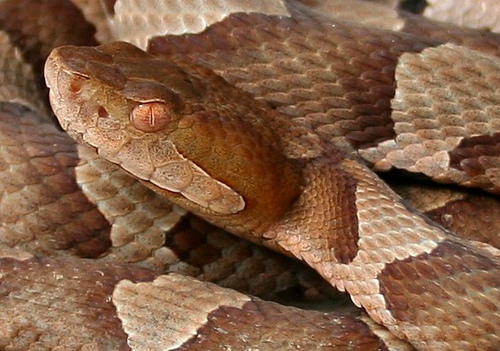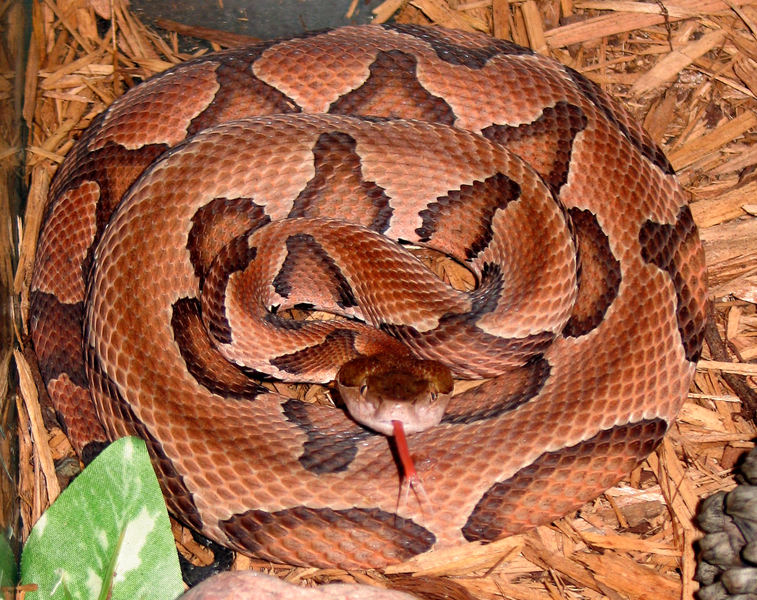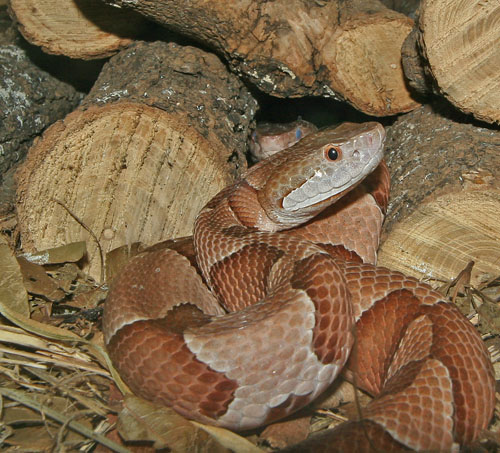


In Florida, this snake occurs only in the panhandle, primarily along the Apalachicola River and its tributaries, and then in the western tip of the panhandle. The FLMNH has specimens in its collections from Jackson, Calhoun, Gulf, Gadsden, Liberty, Leon, and Escambia counties. The range might extend to other nearby areas, but there are no confirmed records from other Florida counties. Outside Florida, the species ranges north to Massachusetts, and west to Texas and southeastern Nebraska.
Habitat: The preferred habitat is low, wet areas around swamps, stream beds, river bottoms, and damp ravines, but it also occurs on the hillsides above the wet areas. It also is found in suburban neighborhoods near people.
Habitat: The preferred habitat is low, wet areas around swamps, stream beds, river bottoms, and damp ravines, but it also occurs on the hillsides above the wet areas. It also is found in suburban neighborhoods near people.
Copperhead bites are extremely painful but usually are not life-threatening for healthy adults. They can be dangerous to children or older citizens in poor health. As with all venomous snakebites, the victim should seek immediate medical care from a physician or hospital experienced in treating snakebite. Juvenile copperheads have a bright, sulfur yellow-colored tail which they hold erect and wiggle like a caterpillar to lure prey to within striking range.
Comparison with other species: This beautiful snake is often confused with juvenile cottonmouths. If you find one in Florida outside the Apalachicola River valley or the extreme western end of the panhandle, chances are you have a young cottonmouth and not a copperhead. Copperheads are often reported from southern Florida, and the people who found them become quite belligerent when their mistake is pointed out.
Comparison with other species: This beautiful snake is often confused with juvenile cottonmouths. If you find one in Florida outside the Apalachicola River valley or the extreme western end of the panhandle, chances are you have a young cottonmouth and not a copperhead. Copperheads are often reported from southern Florida, and the people who found them become quite belligerent when their mistake is pointed out.